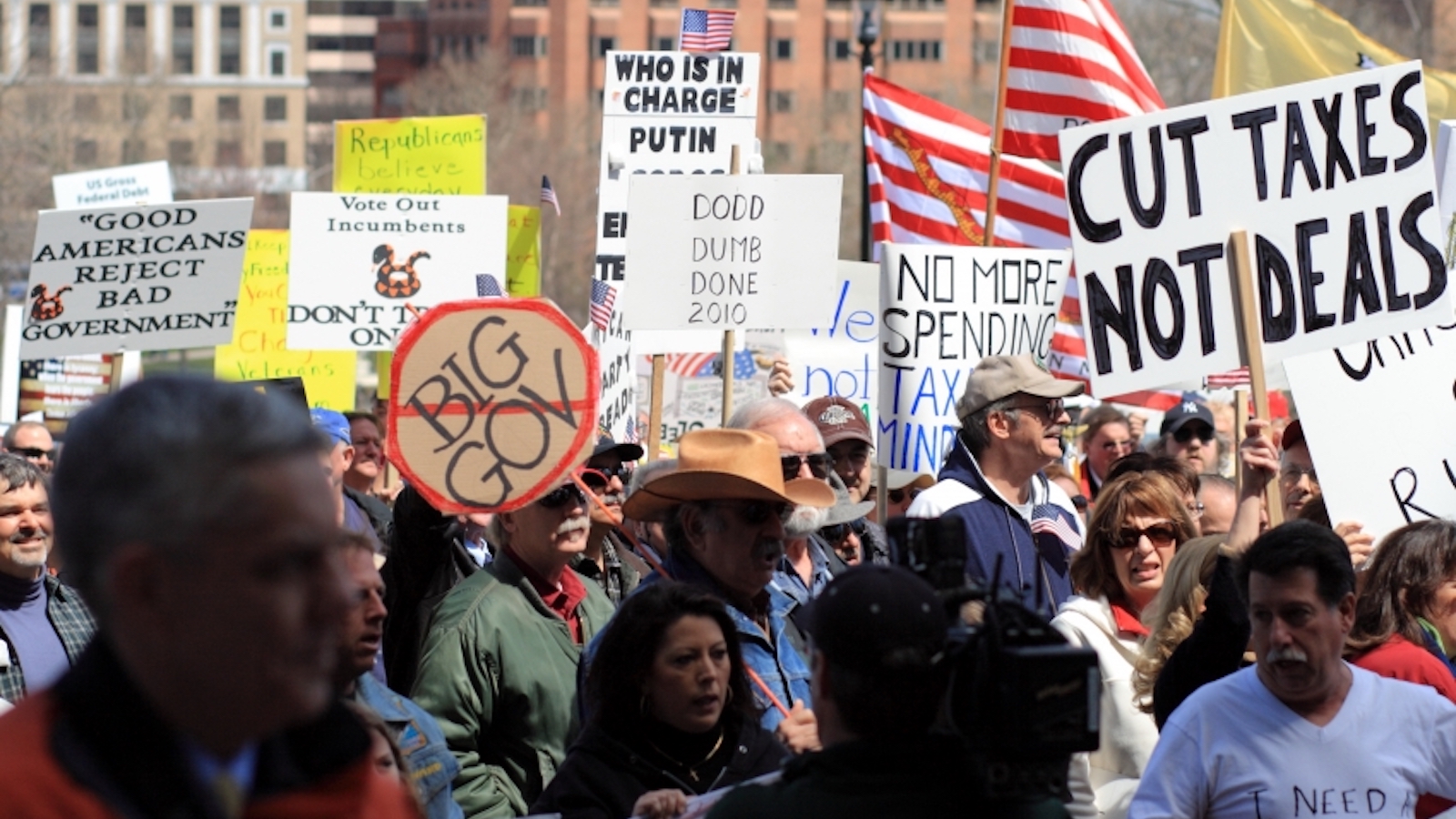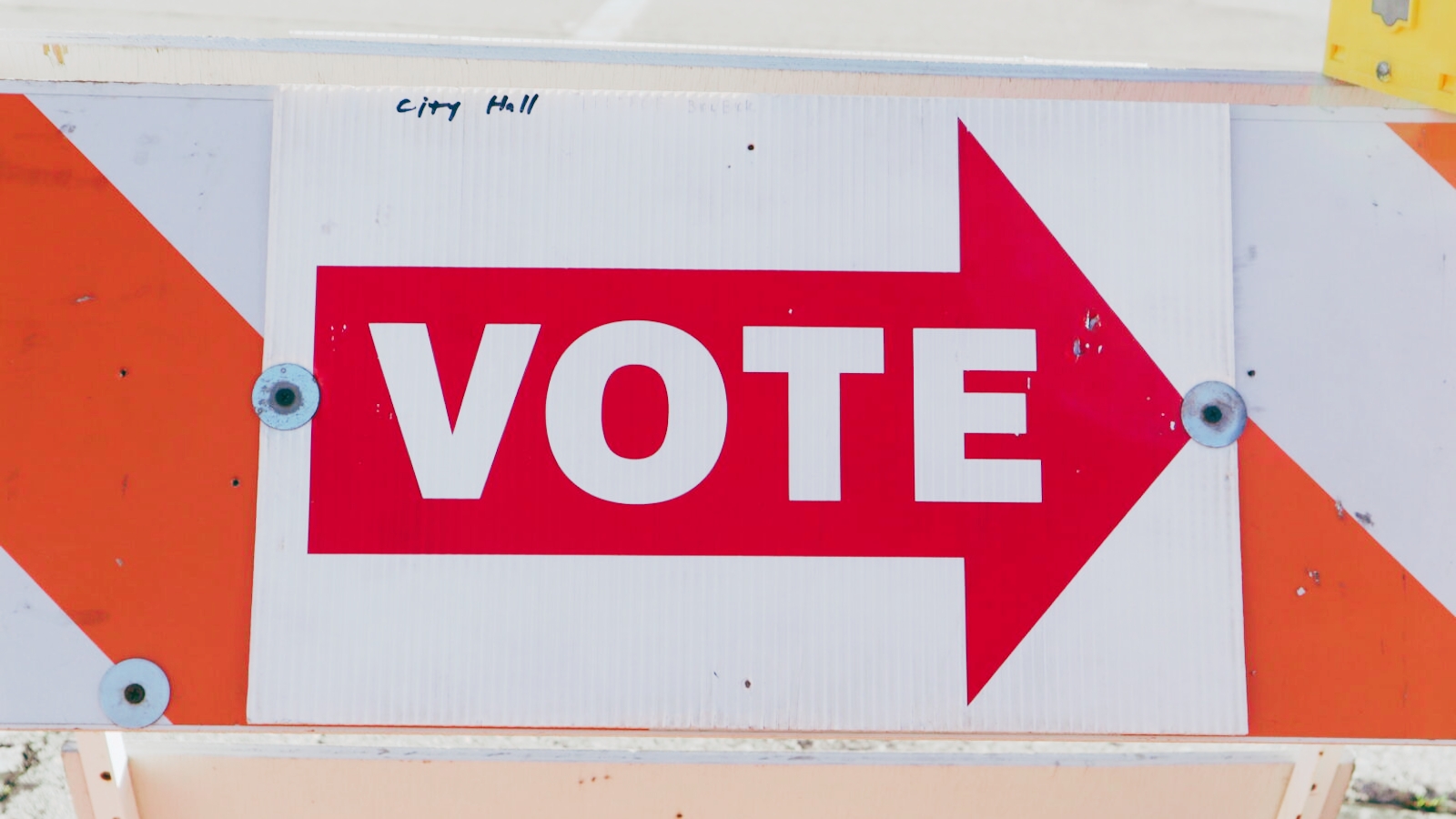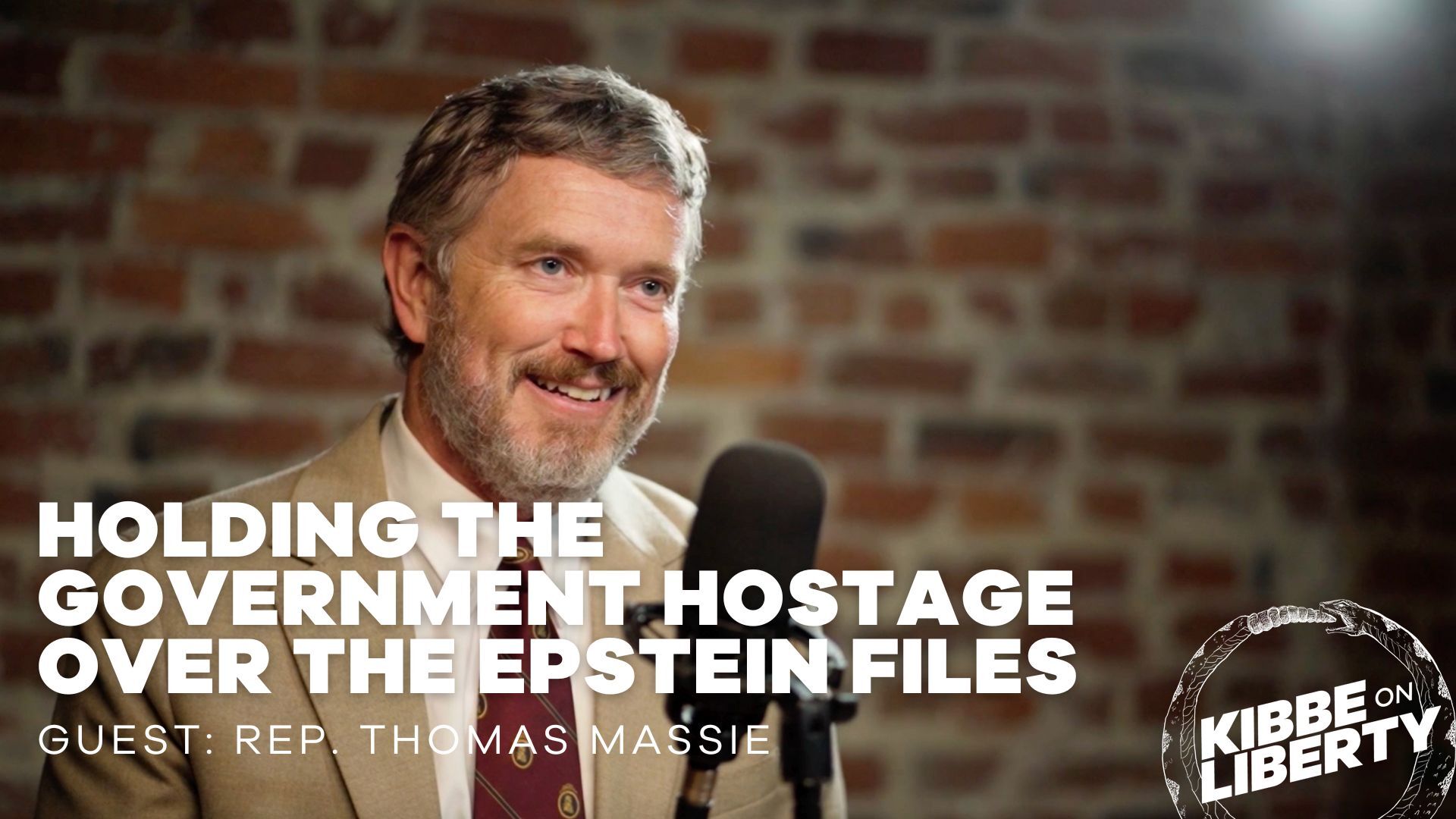
The Tea Party Is Officially Dead. It Was Killed by Partisan Politics.
It has finally happened: The Tea Party is dead.
The grassroots movement that fought so hard for fiscal sanity in government over the past decade is no more. It was killed off by the very same Washington establishment it sought to overthrow. Its death leaves proponents of limited government with some big questions: What went wrong? And what do we do now?
For me, it’s personal. For years, the Tea Party was my life, and I have the the battle scars—and tattoos—to prove it. When I was the President of FreedomWorks, I worked side by side with tens of thousands of citizen activists as a Tea Party organizer, organizing protests and knocking on doors, hoping to topple the Goliath of government. But now the party’s over.
I know, you’ve heard it before. Virtually every Beltway pundit in DC has pronounced the Tea Party dead at one time or another. Republican Senators well past their sell-by dates and Democratic apparatchiks alike have gleefully built a cottage industry on the prediction.
But this time is different. Republicans, now controlling both the legislative and executive branches, jammed through a “CRomnibus” spending bill that strips any last vestiges of spending restraint from the budget process.
Gone are the Tea Party’s biggest and most hard-fought policy victory—mandatory caps in domestic and defense spending. The budget deal replaces them with $300 billion in new spending over the next two years, and, in all likelihood, sets a precedent for greater spending in the decade to come.
It’s 2009 all over again, with trillion dollar deficits, and red ink as far as the eye—or at least CBO projections—can see. As budget deals go, it’s a total fiasco.
The supposed fiscal hawks in the House Freedom Caucus drew a line in the sand on House budget plan that was only slightly less bad. They demanded “full funding for the military and community health centers.”
In the Senate, Rand Paul and Mike Lee fought the good fight, but they couldn’t even convince Ted Cruz to stand firm. Cruz, the one-time Tea Party darling, “reluctantly” supported the spending measure, making sure to itemize all of the spending increases he helped procure with his fellow Texas senator, John Cornyn, while simultaneously decrying “unfettered spending.” Cruz’s statement is world class political jujitsu.
Meanwhile, there are plenty of Republicans and Democrats in our nation’s capitol celebrating the Tea Party’s demise. Majority Leader Mitch McConnell, the primary architect of this steaming pile of budget prolificacy, has been actively plotting the Tea Party’s demise for years.
So what went wrong? Ultimately, I think partisan politics broke the Tea Party.
To understand what I mean, we need to clear away some popular tropes employed by critics to discredit what I still believe to be one of the most important social movements in my lifetime.
The Tea Party was never the product of some top-down design, and it wasn’t owned or controlled by anyone. It was organic and leaderless. That’s why it was so powerful, fueled by new social technologies that allowed citizens to self organize outside of traditional political parties. Like-minded people, once anonymous and silent, found each other and found their collective voice.
The Tea Party also wasn’t partisan. It was held together by a common set of values that united an otherwise disparate group. What did the Tea Party stand for? I would ask everyone I met as I traveled the country. The answer was always some iteration of the same thing: “Individual freedom, fiscal responsibility, constitutionally-limited government, and free markets.”
This consistency of purpose made the Tea Party community a potent counter balance to the typical special interest inertia that drives the growth of government. The grassroots backlash against the Obama Administration’s “shovel ready” stimulus spending shifted broad public opinion against the package. The same thing happened with Obamacare, which became so unpopular that even deep blue Massachusetts rejected it by electing Republican Scott Brown to fill Ted Kennedy’s Senate seat.
If not for some amazingly underhanded and Constitution-bending procedural games played by House Speaker Nancy Pelosi and Senate Majority Leader Harry Reid, the Tea Party would have succeeded in killing Obamacare. Even still, the fact that the fight over Obamacare consumed the entirety of Obama’s domestic agenda for eight years no doubt killed countless bad ideas before they ever saw the light of day.
At some point, people started to notice. The Tea Party’s enemies started to look for leaders to negotiate with, to deal with. But there were no leaders—or rather, there were tens of thousands. That was its greatest strength, and its biggest weakness.
I still remember being back stage at the massive 9/12 march on Washington in 2009. Over a million activists had shown up, and as word got out, the politicians started showing up too. They circled like sharks behind the stage, hoping to get at the microphone. We kept them off that day. But ultimately more and more opportunists got onto the Tea Party stage, wanting to “lead” a leaderless movement.
Sarah Palin, the political huckster, comes to mind. She was suddenly “with” us, just like she had been “with” Sen. John McCain (R-Ariz.) before. Palin helped hijack our purpose over time. Others clamored to get on the stage with their own special agendas, and they did. Eventually the Tea Party community would start to lose its shared focus.
How does a leaderless movement police its brand? We didn’t have a good answer for that.
Of course the rallies served a purpose, to get noticed and try to change the incentives of incumbent politicians accustomed to buying votes at the ballot box by bringing home the bacon. Now they were confronted with a tangible community of potential voters who were actually demanding less from government.
We wanted to turn the dismal politics of concentrated benefits and dispersed costs on its head, by incentivizing politicians to act in the common interest. Our agenda was common sense: We demanded that Washington politicians stop spending our money like it was theirs, and keep out of our health care. But in Washington, common sense is often seen as radical.
And yet it seemed to work. Most Republican politicians, even old bulls like John Boehner and Mitch McConnell, started acting like fiscal conservatives—or at least talking the talk. So it made sense that a social movement based on shared values would get political.
I was very much a part of this decision. In hindsight, however, we should have been more careful. Inertia pulled us toward partisanship, and over time there was growing pressure to support the party, not our principles. Our early victories were some of our best, in part because we were selective in our choices of candidates.
When Sen. Mike Lee (R-Utah) defeated Republican incumbent-for-life Robert Bennett in Utah, it sent shock waves through the Republican establishment. Overnight, Senator Orrin Hatch (R-Utah) rediscovered his constitutional principles, with a clear eye on his upcoming election there. Sen. Rand Paul (R-Ky.), who was actively opposed by Sen. Mitch McConnell (R-Ky.) in his Kentucky senate race, won handily against the GOP establishment’s choice.
We were trying to reboot the system, to make our principles viable in a political marketplace that values special favors over fiscal prudence, and power over principles. The Tea Party shook things up, and our most high profile victories were with candidates with a clearly “libertarian-ish” bent.
But other types of candidates were running as well, and a few of them were totally nuts. Or at least not quite ready for the bright media lights now aimed at every “Tea Party” candidate. In 2012, key races suddenly became about all about rape and abortion rather than economic liberty. At some point the original unifying message was derailed with issues that divided Tea Partiers and other voters alike.
Presidential politics was the final nail in the coffin. How does a decentralized movement choose a single standard bearer? Unlike other races, we couldn’t pick our battles.
With Mitt Romney as our “leader,” political momentum fell apart in 2012. And then Donald Trump split the Tea Party right down the middle, and that was the end.
I watched local organizers rip each other and their Tea Party organizations apart, much like Trump tore apart the GOP. Is Trump an authoritarian with little respect for constitutional limits on executive power, or the pit bull needed to finally break the Republican establishment and the deep state?
One thing is for sure: Under Trump, the Tea Party original agenda of freedom and fiscal responsibility has been replaced with a populist nationalism that doesn’t particularly prize spending restraint. Many of the original Tea Partiers have been replaced with new activists animated by different issues, such as immigration walls and trade restrictions.
In an odd way, Trump is the product of the same political disintermediation that launched the Tea Party. More voices, and different perspectives, have more power in the political process. This same dynamic boosted Ron Paul and his ideas. It also fueled the rise of Bernie Sanders’ “democratic” socialism. Politics, like almost every aspect of modern life, is finally becoming radically democratized.
The Tea Party can claim some lasting victories. Thanks to Rand Paul, Mike Lee, Justin Amash, Thomas Massie and others, liberty has a historically unprecedented seat at the table in Washington. These legislators may fight in futility for fiscal sanity, but each has emerged as a leader on other liberty issues as disparate as criminal justice reform, drug policies, and privacy.
Social movements don’t ever stay the same, and they don’t live forever. Like everything else in civil society, movements and their people and opinions are constantly evolving and changing and adapting.
But in this radically decentralized world, a whole new generation is available to learn about the values of liberty and cooperation and, yes, the tough realities of not spending money you don’t have. For those who care about limited government, the next step will be to connect with this generation, the liberty curious, to engage, encourage, and organize their collective power towards a common good, voluntarily agreed upon.
So yes, the Tea Party is dead. But the American principles of individual freedom, fiscal responsibility, and constitutionally limited government, are all still very much alive.
This article originally appeared on Reason.



